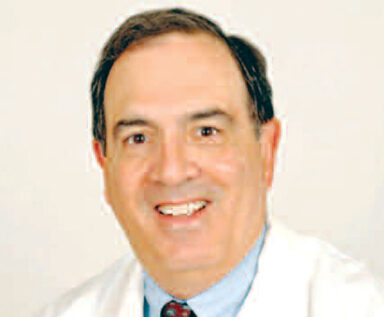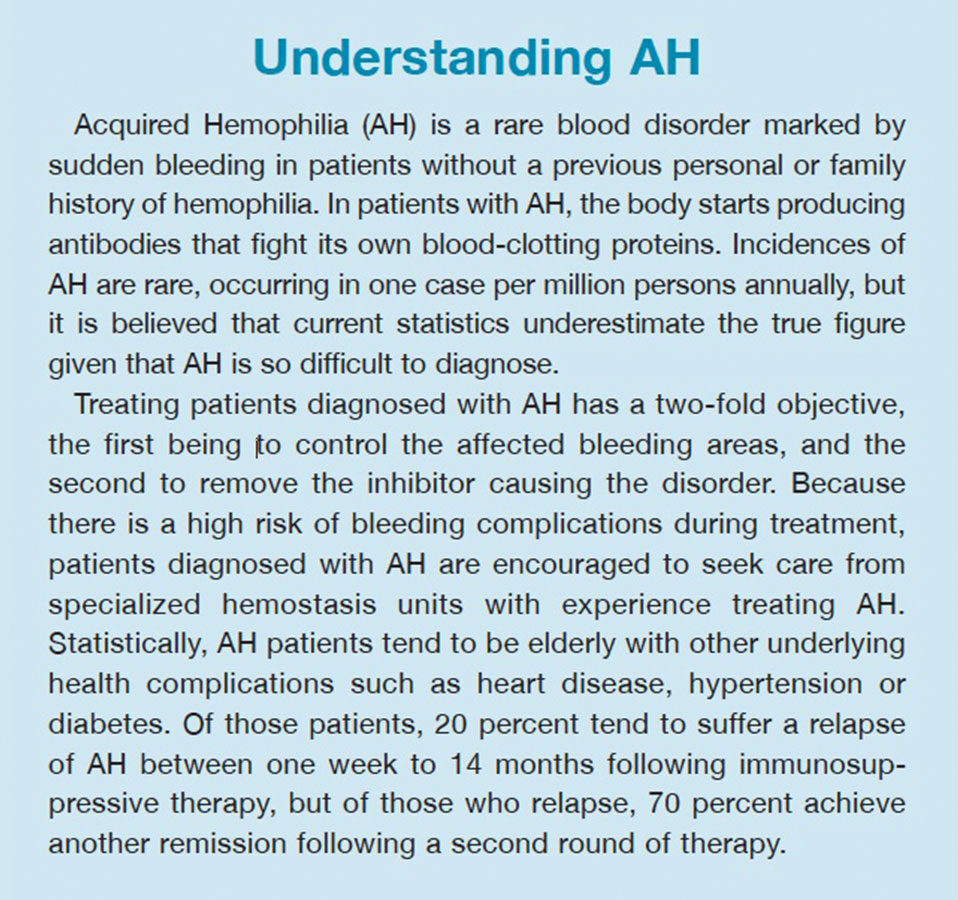Acquired Hemophilia: A Physician’s Perspective
- By BSTQ Staff

DR. CRAIG KESSLER is professor of medicine and pathology, section chief of hematology and director of the Coagulation Laboratory at Georgetown University Medical Center. A graduate of Tulane School of Medicine, Dr. Kessler received his specialty training in hematology and oncology at The Johns Hopkins Hospital. An international expert in the area of disorders of coagulation, Dr. Kessler has a particular interest in hemophilia. He also has expertise in the treatment of hematologic malignancies.
BSTQ:What are the underlying causes of acquired hemophilia (AH)?
Dr. Kessler: AH is an autoimmune disorder. It occurs when the immune system produces antibodies that mistakenly attack healthy tissue, specifically specialized proteins known as clotting factors, most often clotting factor VIII. The immune system normally responds to a foreign substance by producing specialized proteins called antibodies. Antibodies work by destroying foreign substances directly or by coating them with a substance that marks them for destruction by white blood cells. When antibodies target healthy tissue, they may be referred to as autoantibodies. Researchers believe that a triggering event (such as an infection or underlying disorder) may induce the immune system to produce autoantibodies. Autoantibodies in AH are also termed inhibitors because they inhibit the function of the affected clotting factor.
BSTQ: AH is difficult to diagnose. What are some obvious symptoms?
Dr. Kessler: The clinical signs and symptoms of AH differ from those of hereditary hemophilia. Affected individuals may display bruising anywhere on the body due to bleeding into the skin, and bruising can occur spontaneously. Sometimes you see large, purple discoloration that has spread over a significant area of the body such as an entire limb or the chest or abdomen. Discoloration of the skin due to bleeding underneath the surface is definitely a telltale sign; I recently walked into an examination room and made a diagnosis from the doorway. Despite these visible symptoms, the reason most physicians don’t recognize AH is primarily due to its rarity. The second reason is you need a good laboratory that will run the right tests.
BSTQ: What inspired you to become on expert on this rare disease?
Dr. Kessler: At the time, back in the late ’80s there wasn’t anybody else focused on it. There was one other person in the U.S. publishing widely on AH, and from a research perspective, I thought it was a very interesting disease. It combines all of the elements of coagulation with immunology and all diseases associated with development of inhibitors. It is a specialty that requires an interest in internal medicine and allows you to play detective and do a lot of sleuthing. Once diagnosed, AH has a large number of treatment options, none of which work for everybody. From a clinician’s perspective, it is a challenging, low-incidence disease with patients who are desperate for answers. I felt I was up to the challenge.
BSTQ: How has treatment for AH evolved?
Dr. Kessler: Bypassing agents are the recommended first-line therapy due to their rapid action and high level of effectiveness. When I first began studying this disease, the treatment modality centered on a pig plasma purified factor VIII. The pig plasma was developed for AH specifically because the antibodies that formed in AH did not cross-react with the factor VIII from the pig. This was extremely interesting to me, so I decided to do some clinical trials in that area and later became involved with some people who were trying to develop a genetically engineered version of the porcine factor VIII as a treatment form. They stopped manufacturing the original porcine factor VIII material about nine years ago, when it became apparent that the pigs being used to manufacture the product were infected by parvovirus, and there was a theoretical possibility that the virus could be transmitted to humans, though it was never proven. Since then, the development of recombinant factor VIIa (NovoSeven) has been the most significant contribution to the treatment of AH in my lifetime.
BSTQ: Why was the development of recombinant factor VIIa so significant?
Dr. Kessler: Novo Nordisk’s NovoSeven was approved by the U.S. Food and Drug Administration in 2006. It’s a bypassing agent that has a proven efficacy in life-threatening bleeding episodes in AH patients. Because it is artificially created in a lab, it does not contain human blood or plasma and, consequently, there is no risk of blood-borne viruses or other such pathogens. NovoSeven has been well-tolerated and associated with few side effects. It is administered via infusion any time there is a bleed, but there are currently some clinical trials checking to see if this product can be administered in a prophylactic manner to actually prevent bleeding episodes.
BSTQ: What should clinicians be aware of when AH is diagnosed?
Dr. Kessler: They should recognize the role of the hemophilia treatment center (HTC) as a center of excellence. The community physician will probably not be able to handle this type of patient on his or her own — not from the laboratory, blood bank or diagnostic perspectives. The HTC is a resource in the community staffed with hematologists who have seen these types of patients before and can provide guidance to make the treatment of the disease more cost-effective and reduce morbidity. Every state in the country has one, and there’s a whole network of these HTCs usually based in tertiary care or university hospitals. There is a list of locations on the National Hemophilia Foundation’s website at www.hemophilia.org.
